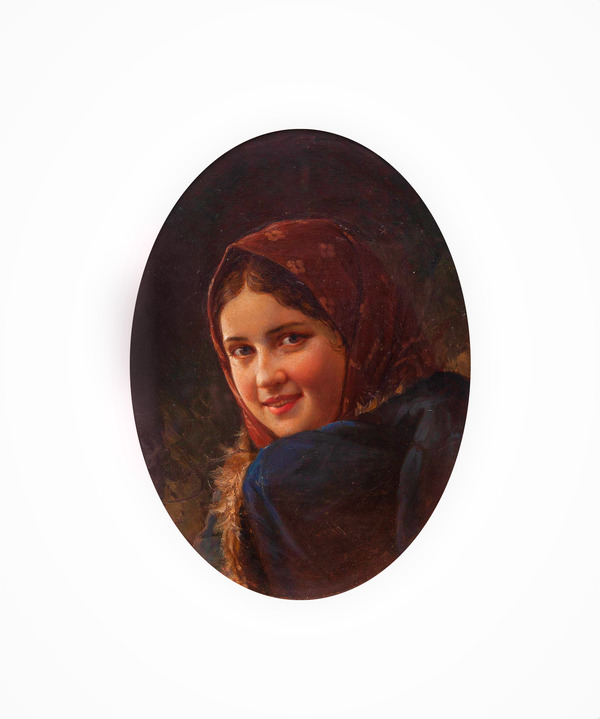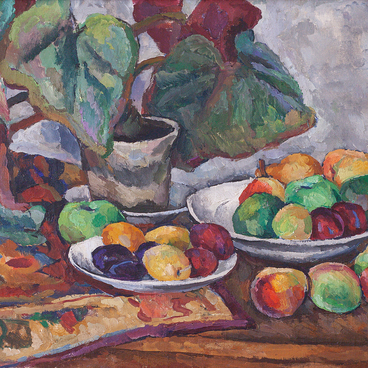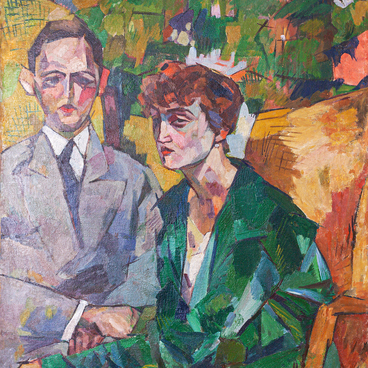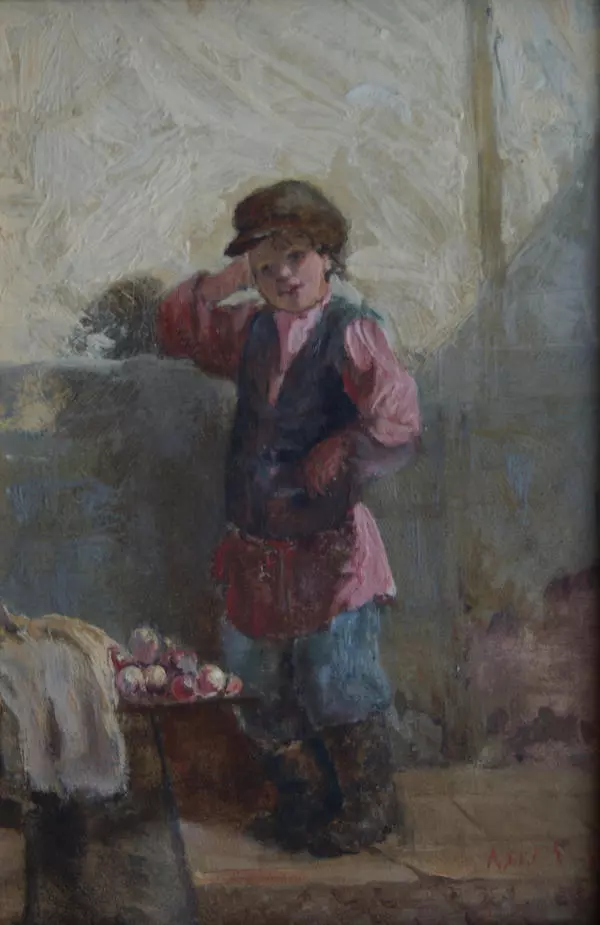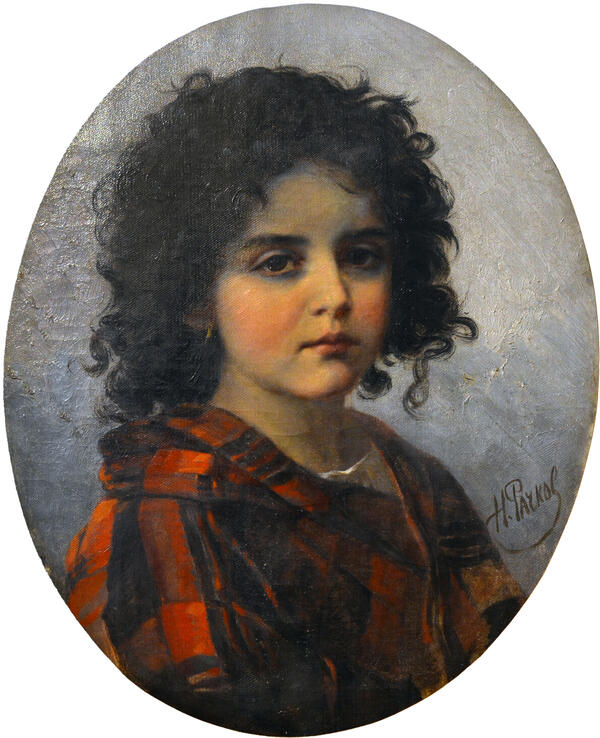Nikolay Rachkov was educated at the Arzamas School of Painting — one of the most famous provincial art schools in Russia in the middle of the 19th century. Later Rachkov himself became one of the teachers there. The school was opened by Alexander Stupin, an icon painter and graduate of the Imperial Academy of Arts. In those years, it was possible to study painting only at the Academy, but not everyone had such opportunity. Thus, Stupin decided to establish the first drawing school in Arzamas.
The method of teaching at the Arzamas school consisted in an in-depth study of nature. Therefore, the portrait genre was considered primarily an exercise in depicting nature, and not an image of a person. This approach reflected the passion of Russian painters for naturalism popular at that time.
Nikolay Rachkov found his calling in the portrait genre and depictions of everyday scenes. The study ‘Village Beauty’ is simple in composition and characteristic of the artist’s style. This is a close-up chest level portrait painted within an oval, which was Rachkov’s favorite type. Uncomplicated at first glance, the image is filled with details and painted with great skill. The vivacity of the portrait is achieved by soft light, which emphasizes the oval face, and the simplicity of the gesture of the girl who hides from the cold.
Nikolay Rachkov usually depicts one character in his genre paintings. The image of a Russian woman, embodied in this study, was very popular with art admirers, and the painter often turned to it.
Several variants of the ‘Village beauty’ exist: on other canvases Rachkov slightly changed the expression of the girl’s face and painted her in different clothes. These artworks are housed in the State Tretyakov Gallery, the State Russian Museum (“Head of a Girl”) and in the Nizhny Novgorod State Art Museum (“Girl in a Red Shawl”).
One of the most successful works of Nikolay Rachkov is the “Almswoman”. In 1878, the artist presented it at an academic exhibition. The canvas was so popular that it was brought to the Universal Exhibition in Paris. Afterwards, the artist’s works were acquired by entrepreneur and collector Pavel Tretyakov and merchant and philanthropist Kozma Soldatenkov.
The method of teaching at the Arzamas school consisted in an in-depth study of nature. Therefore, the portrait genre was considered primarily an exercise in depicting nature, and not an image of a person. This approach reflected the passion of Russian painters for naturalism popular at that time.
Nikolay Rachkov found his calling in the portrait genre and depictions of everyday scenes. The study ‘Village Beauty’ is simple in composition and characteristic of the artist’s style. This is a close-up chest level portrait painted within an oval, which was Rachkov’s favorite type. Uncomplicated at first glance, the image is filled with details and painted with great skill. The vivacity of the portrait is achieved by soft light, which emphasizes the oval face, and the simplicity of the gesture of the girl who hides from the cold.
Nikolay Rachkov usually depicts one character in his genre paintings. The image of a Russian woman, embodied in this study, was very popular with art admirers, and the painter often turned to it.
Several variants of the ‘Village beauty’ exist: on other canvases Rachkov slightly changed the expression of the girl’s face and painted her in different clothes. These artworks are housed in the State Tretyakov Gallery, the State Russian Museum (“Head of a Girl”) and in the Nizhny Novgorod State Art Museum (“Girl in a Red Shawl”).
One of the most successful works of Nikolay Rachkov is the “Almswoman”. In 1878, the artist presented it at an academic exhibition. The canvas was so popular that it was brought to the Universal Exhibition in Paris. Afterwards, the artist’s works were acquired by entrepreneur and collector Pavel Tretyakov and merchant and philanthropist Kozma Soldatenkov.

